Understanding House Insulation Costs: Types, Benefits, and Savings Opportunities
Most energy-efficient home improvements can often begin with one key area: the upgrading of attic insulation. Attic insulation helps in lessening energy use since the heat transfer between the interior of the home and the outside gets minimized, and vice versa. It will make your house warmer during winter and cooler during summer, making it convenient for price-cutting on heating and cooling. The guide below examines the intricacies of attic insulation, the types of insulation available, the involved costs, and other accrued benefits to the house owner who intends to replace or upgrade their attic insulation.
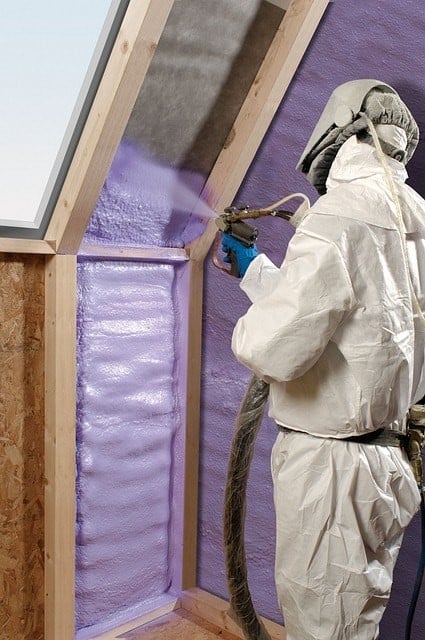
Understanding Attic Insulation
The attic’s insulation provides a stable indoor climate and external noise reduction. In general, the R-value measure of the ability of a material to resist the flow determines the efficiency of attic insulation. The higher the R-value, the more insulating value, energy efficiency, and, of course, the cost the material will have. Several factors influence the overall cost for attic insulation: the type of material being used, the size of your attic, labor costs, and whether other preparations- like air sealing-may be necessary before installation.
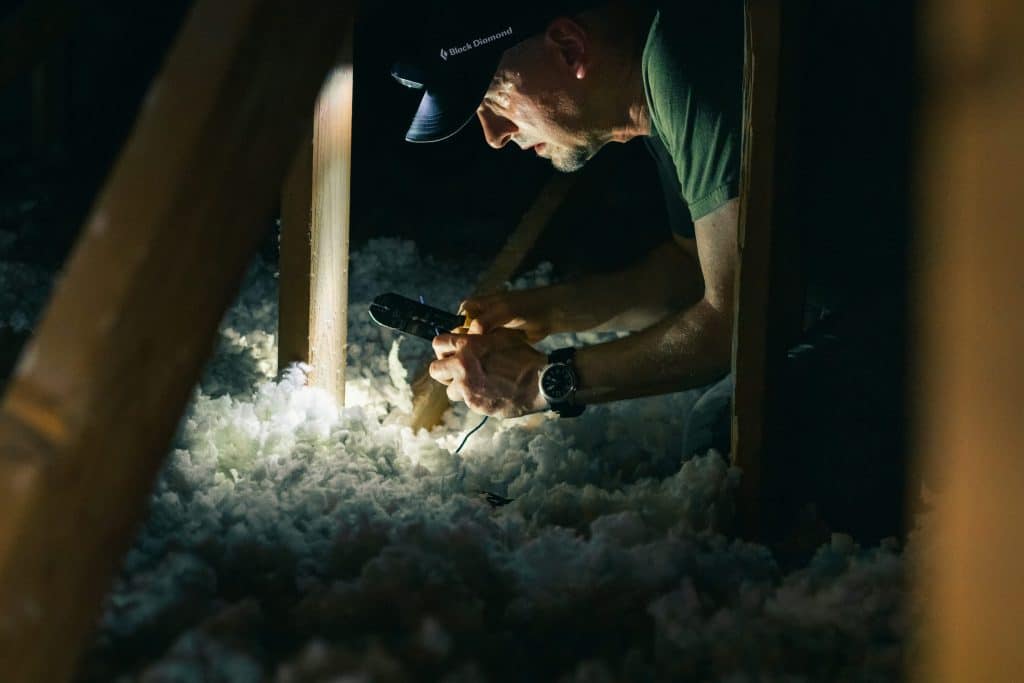
Average Cost to Insulate an Attic
Attic insulation costs vary widely. Homeowners can expect to pay anywhere from $1,500 to $3,000 to insulate an attic fully. The number falls within this range due to the type of attic insulation materials chosen, the size of the attic, and regional labor costs. More precisely, materials and installation costs associated with an attic insulation job should be considered to derive a more accurate budgeting perspective.
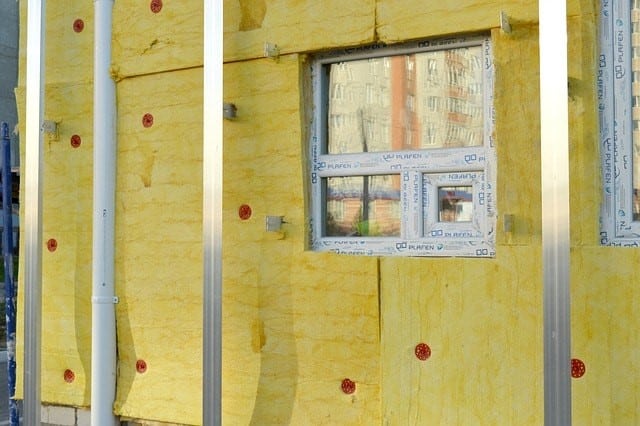
Initial Assessment Costs
It is highly recommended that a professional assess the current insulation and attic condition before installing new insulation. This assessment alone might cost 100 to 600 dollars and will point out problems such as mold, dampness, or structural damages that need to be addressed, which may affect the type and amount of insulation installed.
Attic Insulation Cost by Type Per Square Foot
Not all insulation materials provide the same benefits and are not all equal in price per square foot. Knowing your options will help you choose the best solution for your needs and budget.
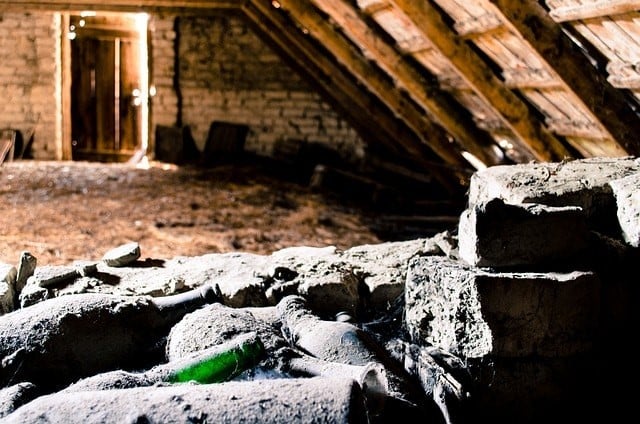
Blown-In Insulation
Cost: $1 – $1.50 per square foot. Blown-in insulation, or loose fill, is made of fiberglass, cellulose, or mineral wool. It works exceptionally well in areas where the spacing between joists is irregular or the number of obstructions is significant. A material blown into place using special equipment provides comprehensive coverage, literally hugging your attic’s unique contours.
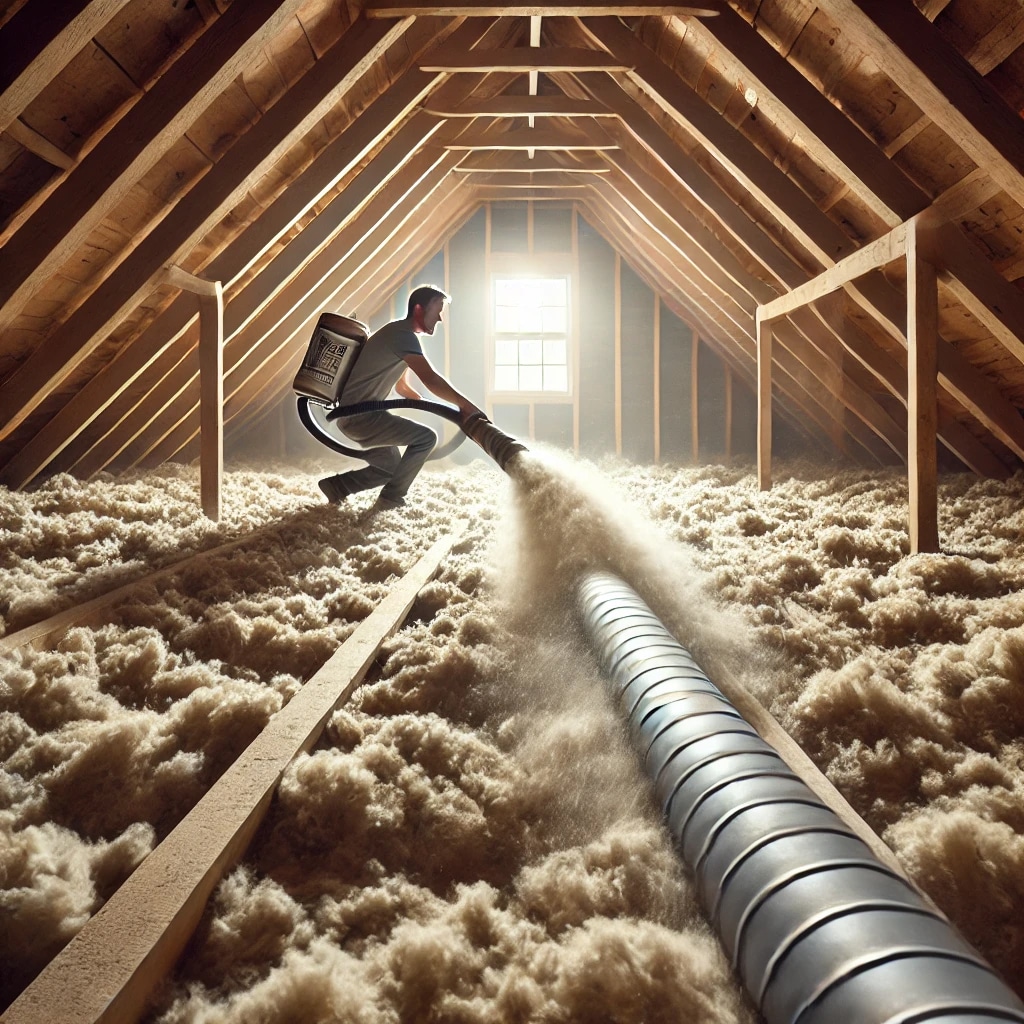
Batt Insulation
Cost: $0.75 – $1.50 per square foot. Batt insulation is pre-cut panels of fiberglass or rock wool that fit between the joists of your attic floor or wall studs. One of the easiest-to-install types of attic insulation costs and one to set up among do-it-yourself projects has a moderately adequate level of insulation.

Spray Foam Insulation
Cost: $3 – $7 per square foot. Spray foam insulation provides the best insulation and air sealing possible. It is wet-sprayed into the attic and expands into a thick foam that can fill even the tiniest openings. It is the most expensive but gives the best thermal resistance and protection of exterior wall insulation from moisture.
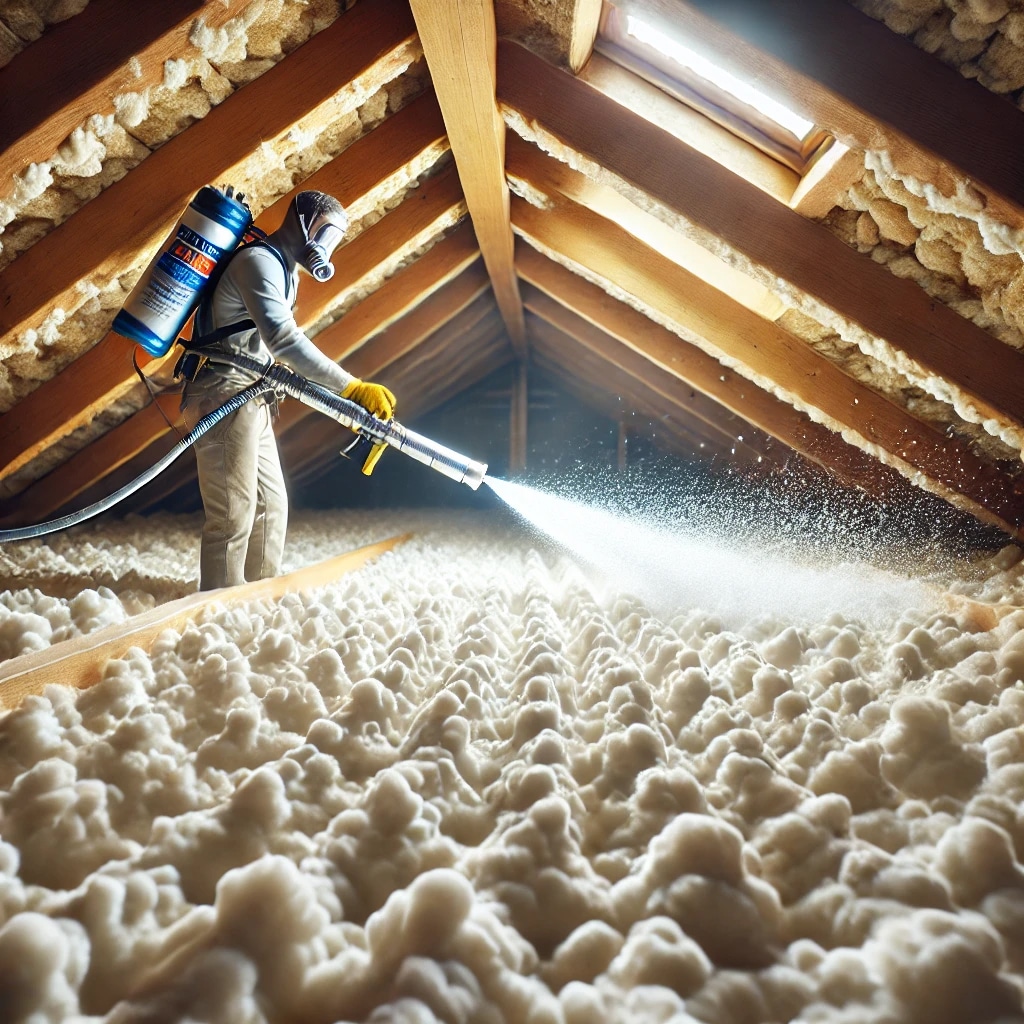
Structural Insulated Panels (SIPs)
Cost: $4 – $7 per square foot While less common, SIPs can be an option for attics, generally in new construction or significant renovations. These panels have an insulating foam core sandwiched between two structural facings, generally OSB. For the SIPs, there are high insulation values and extreme durability.
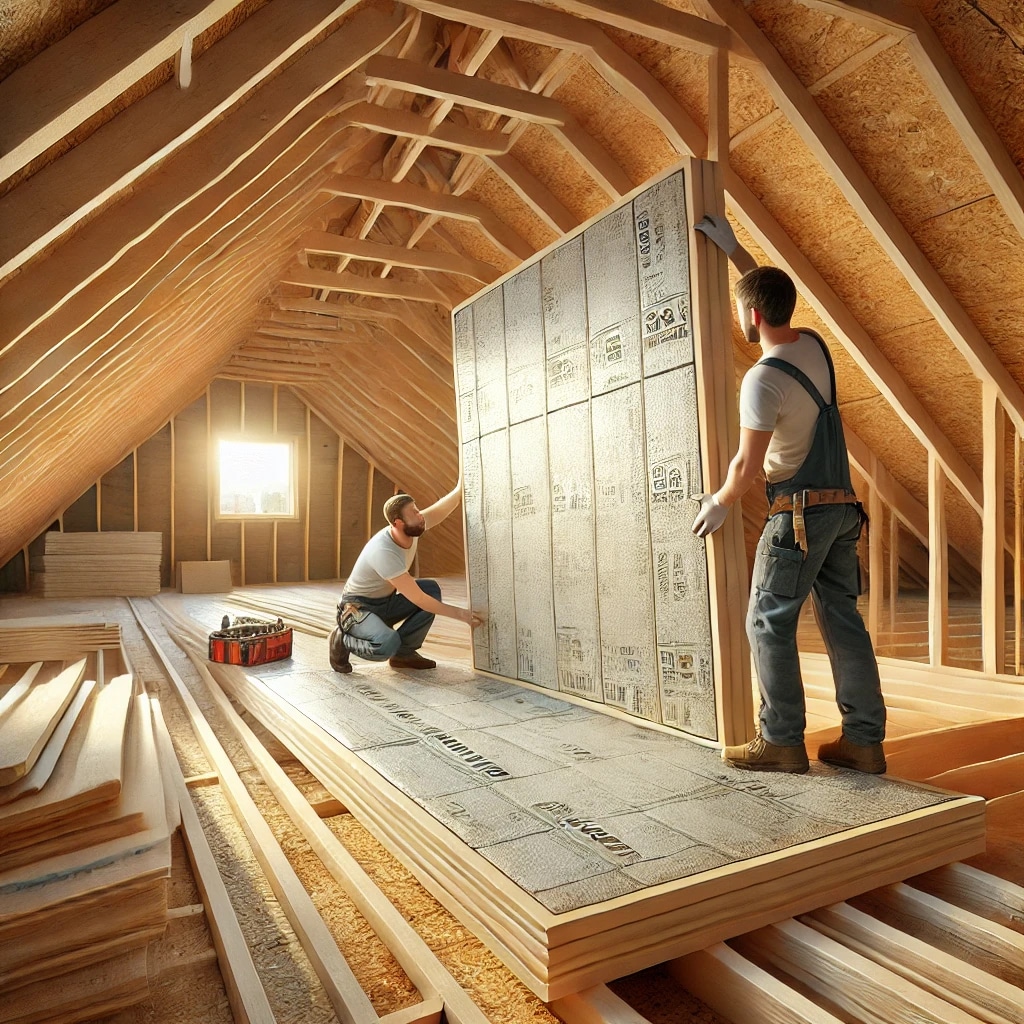
Attic Insulation Install Cost
Installing attic insulation is one critical way of enhancing your home’s energy efficiency; however, costs vary greatly. This is dependent on several factors. Understanding these will help you effectively budget for your wall insulation project.
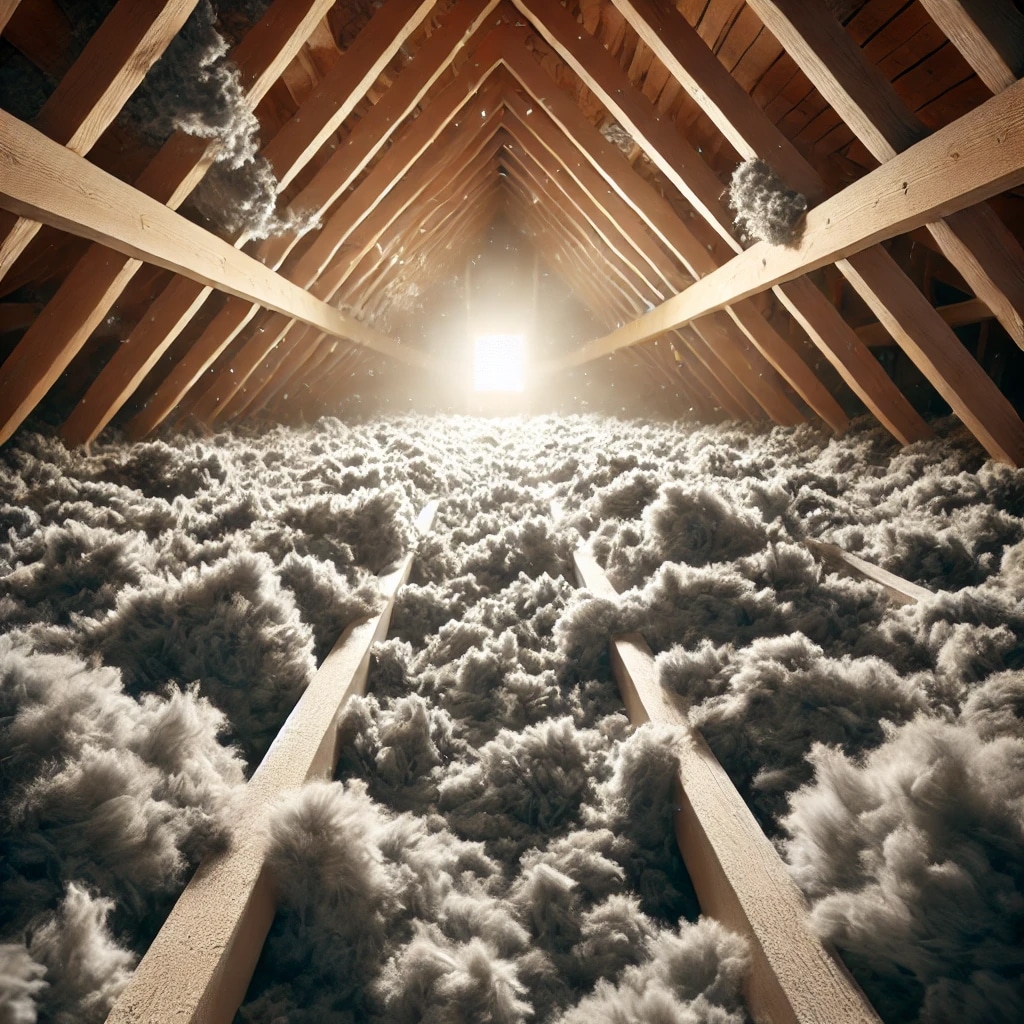
Factors Influencing Installation Costs
- Type of Insulation: The material chosen is the only significant variable determining the price. Fiberglass batts are invariably less expensive than spray foam or blown-in cellulose, mainly because of the material and installation difficulty.
- Size of the Attic: The overall price may be higher because more extensive attics require more material and labor. The price is usually given per square foot, so exact measurements of your attic are essential to provide a cost estimate.
- Labor cost: Labor costs will also be influenced by the complexity of the installation and the professional’s skill level. Spray foam, for instance, requires special equipment and training and can, hence, be more expensive to install than batts or rolls.
- Geographic Location: Most of your rates depend on your location. Rates are always higher in the city than in rural areas due to higher living and operating costs.
- Access and Condition of the Attic: Prices increase when access is difficult or some kind of preparation, such as repairs or removing old insulation, is needed. Good accessibility and a clean area to work in could decrease the total installation time and cost.
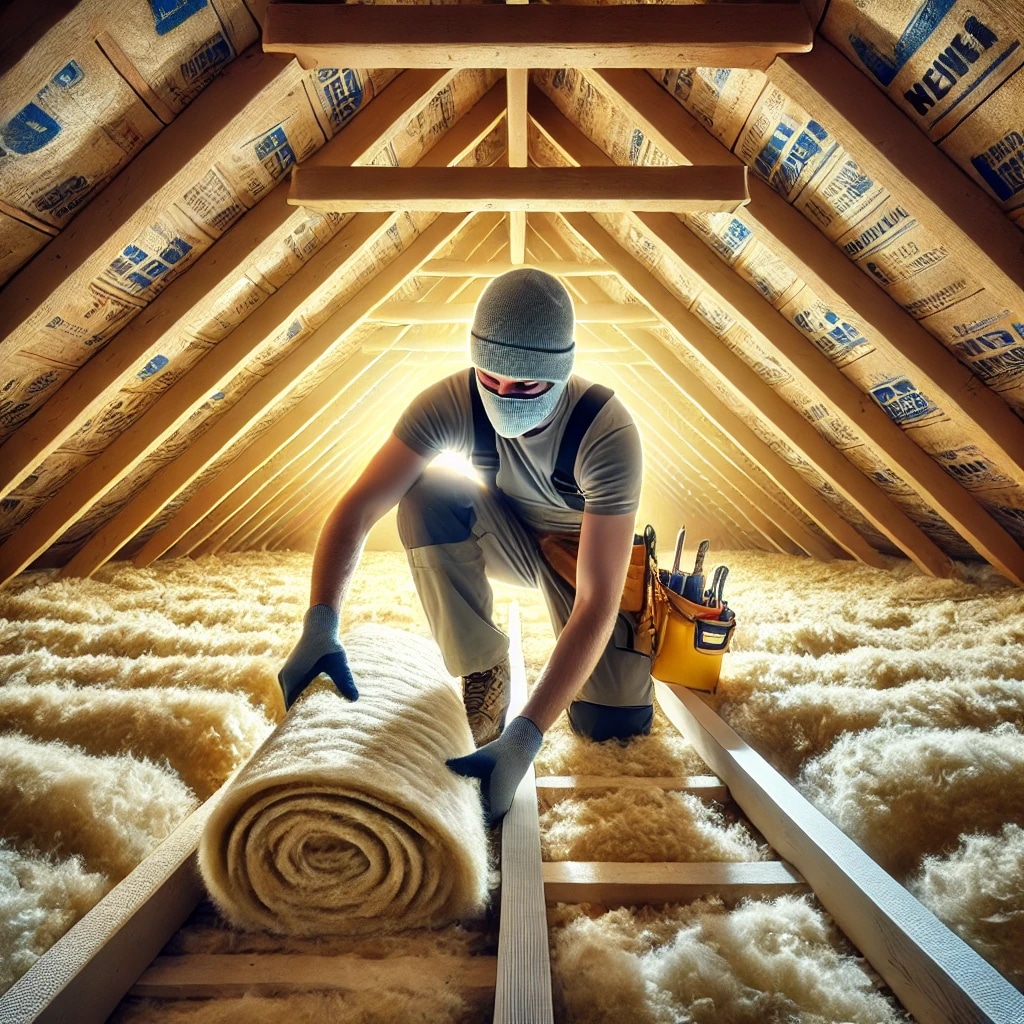
Average Cost Estimates
On average, homeowners can expect to spend between $1.50 to $3.50 per square foot for professional attic insulation installation. For example:
- Fiberglass Batts: $1.50 – $2.00 per square foot
- Blown-in Cellulose: $1.50 – $2.50 per square foot
- Spray Foam: $3.00 – $7.00 per square foot
Getting multiple quotes from local contractors is wise to find the best price and ensure the installation is done correctly and efficiently.
Insulation Replacement Cost
Another possible cost is the removal of the old, damaged, or inefficient attic insulation and its replacement with new material. This can be more labor-intensive than an initial installation since it often involves removing and disposing of the old material.
Factors Influencing Replacement Costs
- Removal of Old Insulation: The cost of removing old insulation would essentially depend on the material type and access conditions. Therefore, loose-fill insulation may be easier and less expensive to remove compared to spray foam, which could be firmly adhered to the attic surfaces.
- Disposal Fees: Proper disposal of old insulation materials, especially those containing asbestos or any hazardous substance, can add to the cost. Exceptional handling and environmental fees may be applied.
- Condition of the Attic: A premise with an insulation problem leading to moisture or mold in the two attic spaces may require additional remediation before more insulation is installed, adding to the overall cost.
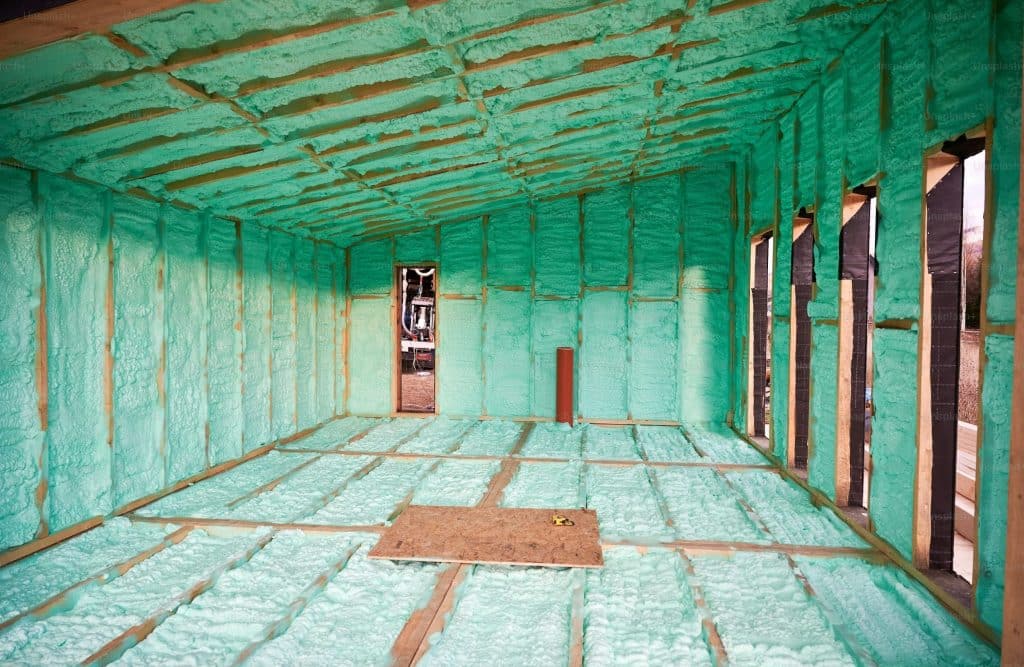
Average Cost Estimates
Removing old insulation varies from $1.00 to $2.00 square feet, depending upon material type and condition. With the addition of new insulation installation costs, one may estimate a total replacement cost ranging from $2.50 to $9.50 per square foot. For example:
- Removing old batt insulation and installing new spray foam: $4.00 – $9.00 per square foot
- Removing and replacing blown-in cellulose: $3.00 – $5.00 per square foot
When replacing insulation, having a professional tell you whether a full replacement is needed or whether the already used insulation material should be supplemented can help you make an effective decision in terms of cost so that your attic is satisfactorily insulated and energy-efficient.
Benefits of Insulating Your Attic
Energy Savings
One of the most significant advantages of sound insulation in the attic is the energy savings. Proper insulation can save a home 10-50% on heating and cooling bills, and these savings can be even more considerable when living in areas with extreme weather.
Better Air Quality
It also prevents potential pollutants and allergens from entering the home, improving indoor air quality considerably. This keeps pests and rodents away, protecting the living space against unwanted invaders and potential allergens.
Keeps Your Room Temperature Stable
Adequate insulation helps maintain a consistent temperature throughout your home, reducing the strain on HVAC systems and enhancing overall comfort.
Choosing the Right Insulation for Your Home
The type of insulation selected depends on what would best serve energy efficiency, comfort, cost savings, and the correct application. Factors such as where you live, what part of the house you are insulating, and your budget will lead to a recommendation for a specific type over others.
Consider the Climate
The choice of insulation depends heavily on the climate. In areas where the weather may be cold enough, you must use insulations with a high R-value to keep your homes warm through harsh winters. For warm cities, lighter alternatives like fiberglass batt insulation batts work and reflect some heat from your homes.
Evaluate Your Home’s Specific Needs
The different areas of your home will be better suited to certain types of insulation. For instance, attics would favor materials that can easily be laid between joists and rafters, such as loose-fill cellulose or fiberglass batts, since heat usually rises and escapes through the roof. Closed-cell spray foam may be virtually ideal for walls, insulating and sealing air leaks in one step. This makes it especially handy in the context of a renovation when exterior walls are directly accessible. Basements and crawl spaces require insulation capable of handling at least moderate moisture levels; in those places, foam board or spray foam will prevent mold and dampness.
Assess the Material Properties
The type one chooses depends on the material’s properties that best suit what one is looking for. Fiberglass, being relatively low-cost and easy to install, is the favorite in do-it-yourself projects; however, it must be well-sealed, or else energy may leak through it. Cellulose is made from recycled paper products and is a greener alternative with better sound-deadening qualities and a higher R-value per inch than fiberglass. Spray foam is more expensive; however, it provides superior air sealing and high R-values, serving effectively in odd or hard-to-reach spaces. Mineral wool is another option for fire resistance soundproofing and is denser overall than fiberglass insulation, which also means it serves better thermally.
Cost vs. Long-term Savings
While considering costs, weigh both upfront investment and possible long-term savings. Materials like spray foam and mineral wool might be more expensive up front for serious installation but provide much more significant long-term reductions in heating and cooling because of their excellent insulating performance. You should also base your choice on the durability of the insulation and how well it can be maintained without much maintenance. In this case, the cellulose insulation may require periodic top-ups to maintain performance, but spray foam is more resilient and can severely avoid settling.
Consult with Professionals
Further consultation with a professional in the insulation field is highly recommended; they can advise the best solution that will fit your home’s particular needs. They will assess your home’s exact needs and recommend the most appropriate types of insulation, given your climate and structural specifics, for an investment that will indeed pay off in adding value, energy efficiency, and comfort to your home.
DIY vs. Professional Installation
In this regard, attic insulation for a home raises two key questions: doing the job yourself or hiring professionals to install insulation. Both questions have positive and negative sides that depend on skill level, project difficulty, and expected outcome. Those willing to try professional installation will find companies like Volcano Builders offering this service.
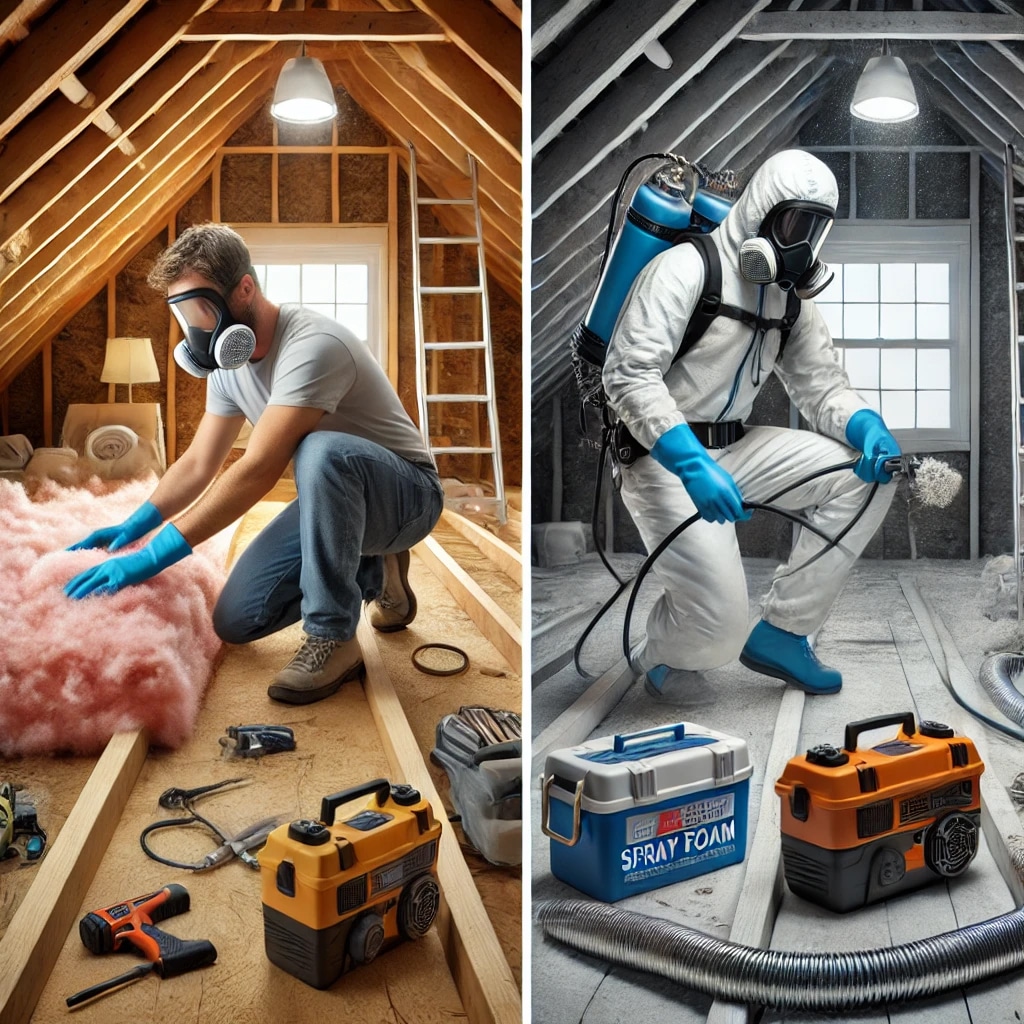
DIY Attic Insulation
Advantages:
- Cost Savings: The most obvious benefit of DIY insulation is the potential to save some dollars and cents. By eliminating labor costs, a homeowner might have to pay for just materials.
- Flexibility: Working at one’s own pace allows one to regulate the pace of the project according to one’s schedule, which is especially attractive for people who can spread tasks out over time.
- Personal Satisfaction: Accomplishing projects by oneself provides a sense of fulfillment, apart from the customized solution that can exactly meet a certain particular need.
Challenges:
- Technical Skill Requirements: Materials and methods related to insulation installation require considerable technical expertise. This is because they are to be selected in hindsight, keeping in mind energy efficiency.
- Physical Demand: Installing insulation requires labor and effort, with much time perhaps spent in the attic, where areas are usually cramped and uncomfortable.
- Potential for Mistakes: Novice DIYers are likely to make errors, such as application in too-thin layers or not sealing correctly, that diminish the effectiveness of the insulation.
Professional Installation by Volcano Builders
Advantages:
- Expertise and Experience: Volcano Builders bring extensive experience and specialized knowledge to every project. Their team has been trained to handle all types and situations of insulation, assuring high-quality installation in conformance with the newest building codes and energy efficiency standards.
- Time Efficiency: A professional crew can complete the job much quicker than a DIYer. This is very important for people who want minimal disturbance in their lifestyles and to enjoy the benefits of new insulation sooner.
- Long-term Cost Efficiency: While hiring the pros includes certain upfront costs, the amount saved in the long run with the appropriate attic insulation may well balance that cost. Proper insulation, when correctly installed, would reduce energy bills and avoid costly issues such as moisture damage or air leaks.
Challenges:
- Higher Initial Investment: The significant disadvantage when hiring a professional is the higher initial cost of materials and labor.
- Scheduling: When you work with a contractor, you are at the mercy of their schedule, which may not perfectly align with yours.
Why Choose Volcano Builders?
When you hire Volcano Builders to insulate your attic, you are hiring peace of mind. An unblemished record of excellence and customer satisfaction means a job well done, and your new attic insulation will not be left out. They offer:
- Comprehensive Assessments: Pre-installation tests to determine which type and strategy of insulation is best for your home.
- Customized Solutions: Each job is customized for the specific homeowner and is, therefore, carried out uniquely to accord with the peculiarities of their property for optimum insulation coverage.
- Quality Assurance: Volcano Builders claim to be meticulous in their work. They use the best quality materials with modern techniques to ensure your insulation lasts and performs efficiently for many years.
Additional Tips to Reduce Costs
Quality versus cost management is one of the major concerns of most homeowners when planning to insulate their attics. The following are some measures that will help decrease the financial burden of an attic insulation project without compromising on one’s desired energy efficiency and comfort levels in a home.

1. Seek Out Rebates and Incentives
Most utility companies and government programs offer rebates and incentives when upgrading to increase energy efficiency, including attic insulation. These programs can significantly reduce the upfront cost of materials and installation. Check with your local energy provider or visit the Department of Energy website to find out what programs are available in your area.
2. Conduct a Preliminary Energy Audit
Before you decide on insulation type and quantity, consider having an energy audit performed. It can help identify areas where specific needs are most required and where energy loss occurs most in your home. This will allow targeting areas so that you may not over-insulate a less critical area.
3. Choose the Right Insulation Material
Different insulation materials have different costs. For insulation contractors, fiberglass batts are usually cheaper than spray foam insulation. Conversely, different materials will have different requirements for your space, and more importantly, the long-term savings in terms of energy consumption depend on them. Spending more is worth it, which might provide even better savings due to better thermal performance.
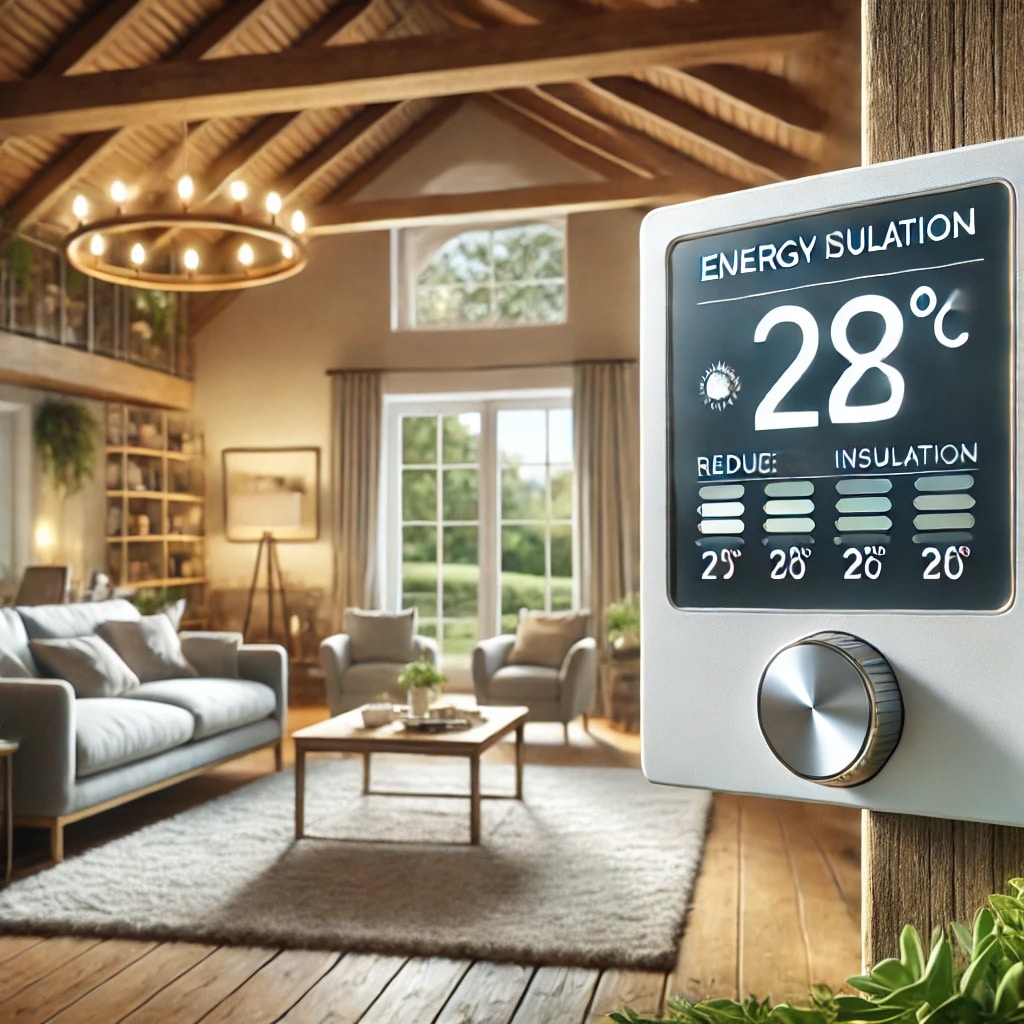
4. Do Part of the Work Yourself
If you are comfortable with light DIY work, you can save on labor costs by doing some of the work. You could contract it out and have the professional do the more complicated aspects of the installation, for example, fitting insulation around awkwardly shaped areas that are difficult to reach. You can do the more open regions yourself by laying batts. Always understand proper techniques and safety precautions before beginning.
5. Purchase Materials in Bulk
If you’re insulating a large area or several areas of your home, the economies gained from buying insulation materials in bulk can pay off. Suppliers often have discounts for large orders, and if you work out the total area to be covered and can order ahead of time, it will be well worth your while.
6. Improve Air Sealing
Air sealing before adding insulation in an attic can increase the overall effectiveness of the insulation. Take the time to caulk and use weather-stripping around attic windows, doors, and any other gaps that might allow them to leak air. This will help the insulation operate at peak efficiency and reduce the required insulation.
7. Recycle Old Insulation Where Possible
If you’re replacing insulation, determine whether any reflective insulation from the old insulation can be reused or relocated to other parts of your home. Most insulation types, including foams and batts, can be recycled if their insulating properties are still good, reducing the amount of new material to purchase.
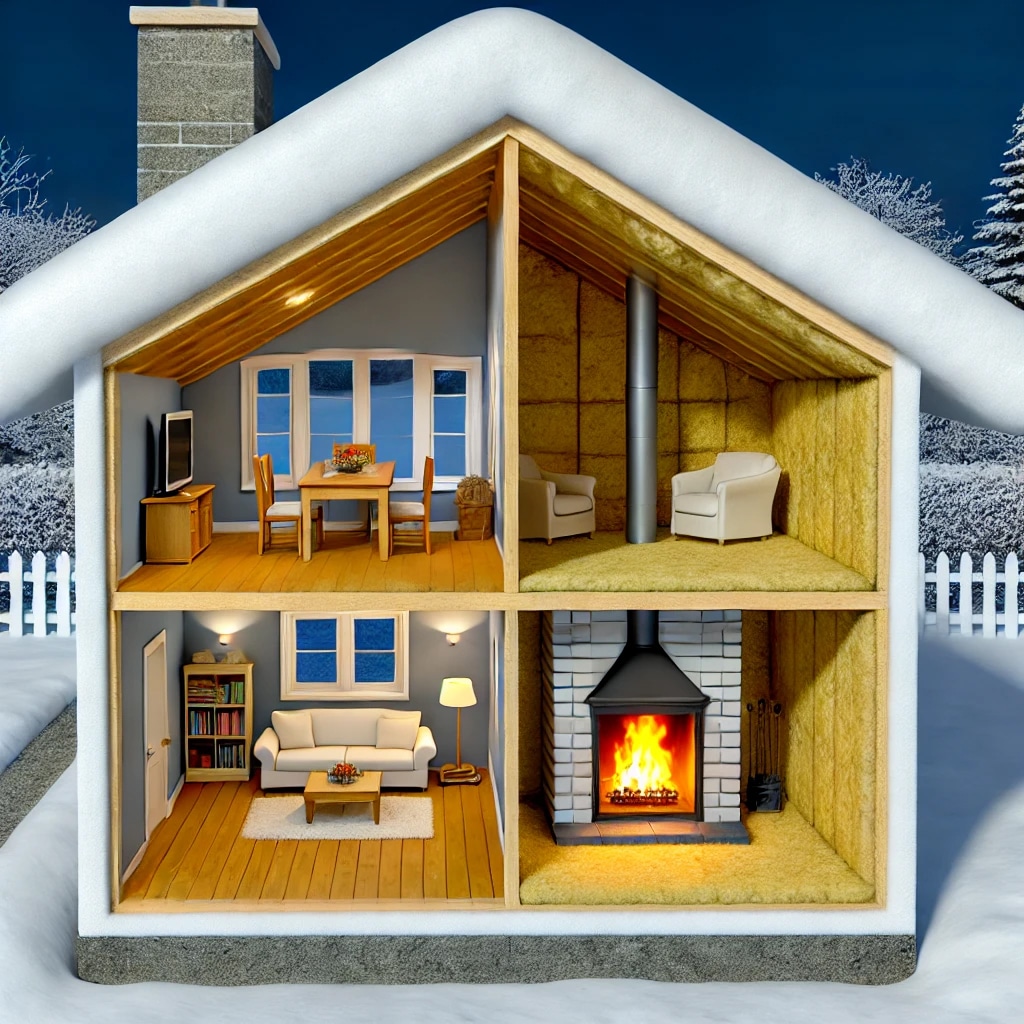
8. Plan for Long-Term Efficiency
Consider the long-term benefits of higher-quality insulation options for cost reduction. Although more efficient materials are occasionally much more costly to buy, they often result in significantly greater savings in heating and cooling costs over time. Analyzing the payback period through energy savings can sometimes justify the initial investment.
9. Combine Insulation Projects
If you have other renovations planned, such as roofing or siding replacement, consider grouping those projects with your insulation project. This will help save on the overall labor cost and minimize disruptions to your home by improving things in one step.
Conclusion
Investing in proper attic insulation also helps increase your house’s energy efficiency, comfort, and even resale value. By knowing what insulation types exist and how much each one costs, you can gauge the pros entailed in every option and make an efficient decision that best answers your needs and suits your budget.
FAQ
What factors influence the cost of attic insulation?
Primary factors include the type of insulation installed, the size of your attic, and whether you opt for DIY or professional installation.
Should I DIY or hire a professional for attic insulation?
Consider DIY only if you have experience with home improvement projects; otherwise, hiring a professional ensures safety and effectiveness.
Can attic insulation reduce both heating and cooling costs?
Yes, it effectively reduces the need for heating in the winter and cooling in the summer.
Do I need to air-seal my attic before installing insulation?
Yes, air sealing is essential to prevent energy leaks and maximize the effectiveness of your insulation.
How long does it take to insulate an attic?
The duration depends on the size of the attic and the type of insulation, but it typically lasts from a few hours to two days.










